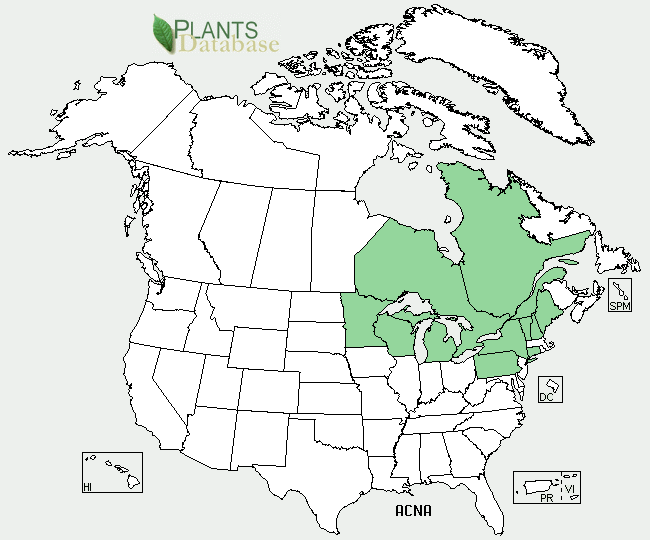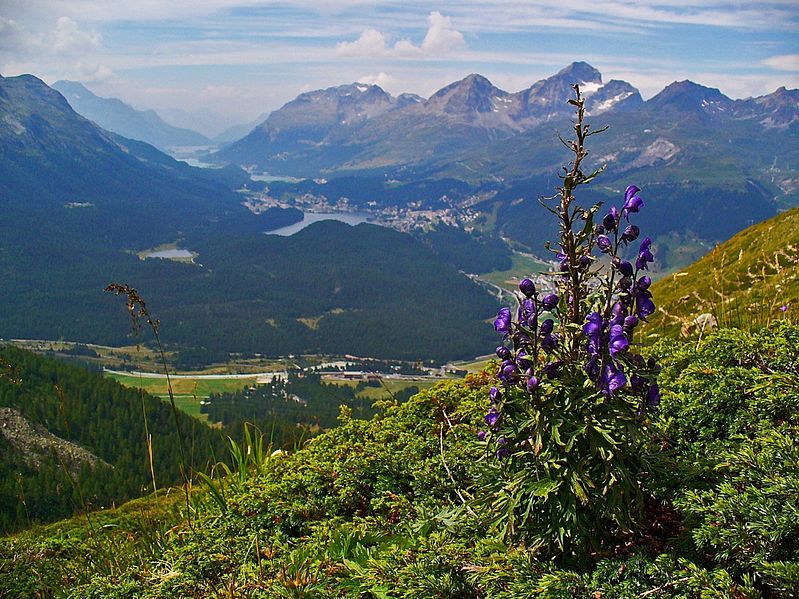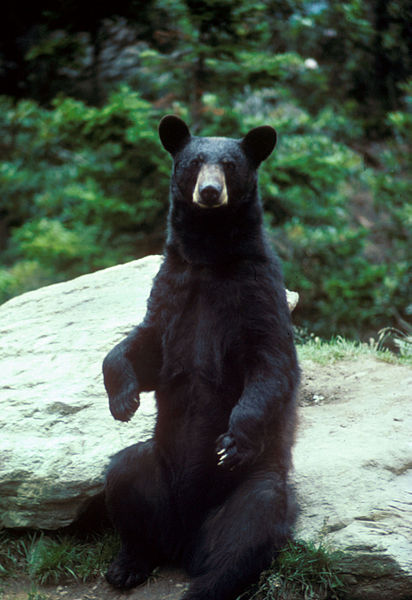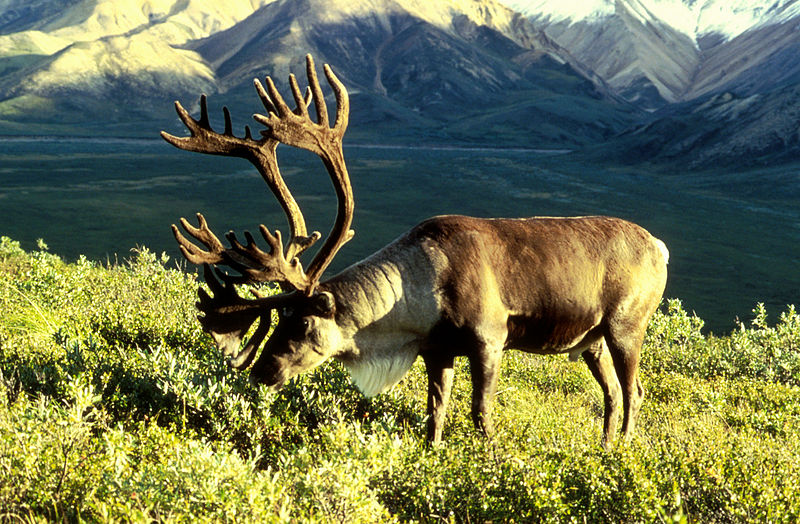Habitat
Aconitum napellus can be found in a variety of
places.
This plant can be found in a variety of regions from hill tops
to mountain bases, forests, stream banks, road sides, meadows,
waste grounds, rubbish tips, to even family gardens.
Below is a map from the United States Department of Agriculture
depicting where A. napellus has been found to grow
naturally within the United States and Canada.

Out of North America this species of Aconitum can also
be found throughout Central Europe; from England to the
Carpathian Mountains, and from Portugal to Sweden.

Although A. napellus has the ability to grow in high
altitudes, it generally grows in more lowland areas. As far as
general surroundings, A. napellus prefers to grow in
areas with rich, moist, and very fertile soil. The soil is
usually also slightly acidic and often in shade. It grows more
in temperate areas since it is adapted better for climates that
stay less than 70 during the night time, even in summer. This is
why this plant is not generally found growing in the wild much
farther south than the 40 degrees north latitude line. The
average precipitation in areas of high densities of A.
napellus falls around the 1m range. If the climate in
which a particular population of A. napellus is growing
falls more to the north, then it can withstand full sunlight,
but in general A. napellus prefers to be in shade,
especially when further south. This helps to prevent desiccation
(drying-out).
A wide variety of different organisms are also found in the
habitat of Aconitum napellus. Some of the
characteristic mega-fauna (a.k.a. large and widely known
organisms), are squirrels, rabbits, chipmunks, badgers, bears,
foxes, wolves, minks, lynx, caribou, coyote, cougar, skunks,
moose, deer, shrews, voles, owls, robins, cardinals, eagles,
swallows, geese, hawks, sparrows, ducks, and really all animals
native to the coniferous and deciduous forests of Europe and/or
North America.


This plant fits into a specific niche partially by flowering
relatively late in comparison to many other flowers, waiting
until mid to early summer to begin blooming. This plant also
helps to provide food and nectar to various insects in the
ecosystem. They are generally able to feed without being
poisoned by the plant's toxin. This gives the plant many
opportunities to spread out its reproductive pollen, meanwhile
supporting an important part of the ecosystem.
Since the poison A. napellus makes acts largely as a
neurotoxin, stimulating the sodium channels within neurons of
animals, it does not have much of a negative effect on other
plants whose signals are largely sent in a chemical form as
hormones. This means that it still has to compete against other
plants for pollinators and growing space, but it often has a
general advantage over these other plants in that it has an
extremely reduced list of predators due to the deadly toxins it
makes. To get more detail on these toxins and how they work
click here. The effects of the poison
carry across almost all vertebrate animal species, so many of
the animals in the ecosystem instinctively know not to feed upon
it.
A. napellus plants generally grow to be about 1m tall
which puts them at a perfect intermediate height that is both
shaded enough by the taller plants that it stays cool and
doesn’t lose unnecessary water, but also tall enough to
out-compete the shorter ground cover plants that are often
abundant around A. napellus grows. To learn more about
how the plant uses light for energy
click here.
To go to the home page click here.
